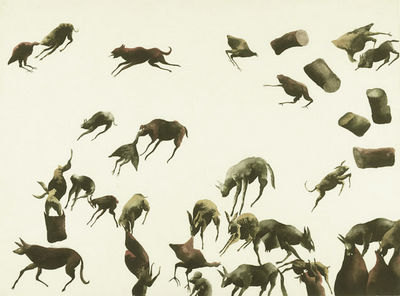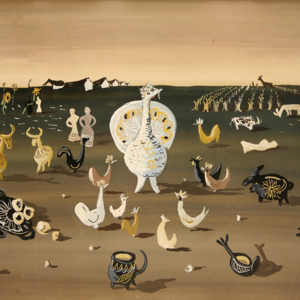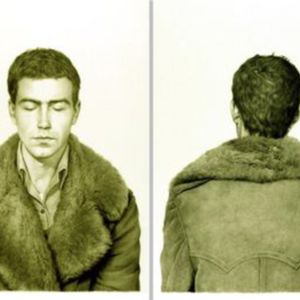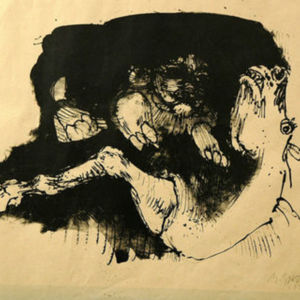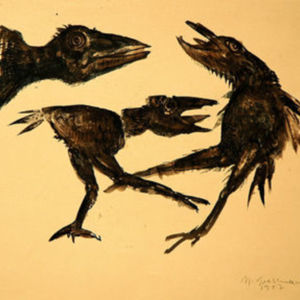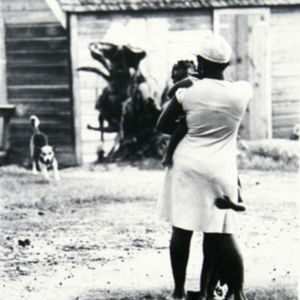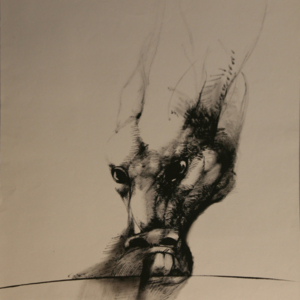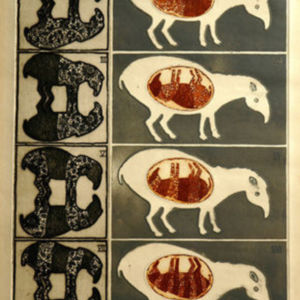Bestiary
“Let us pass now from the zoo of reality to the zoo of mythologies,” Jorge Luis Borges and Margarita Guerrero propose in The Book of Imaginary Beings (1967), a hypothetical menagerie inhabited by entities from “Prince Hamlet” to “n-dimensional hyperplanes and hypervolumes,” “all generic things” to “each one of us and the godhead.” This panoply of beings, spanning the animal and the human, the divine and the mundane, populates the visual Bestiary of Streams of Being. This gallery meditates not only on our relationship to the nonhuman, but also on the nature of fantastical projection and the permutating hybridities that question the basis of our own existence. In depictions of pregnant tapirs by Ruth Bess and of birds’ heads by Marcelo Grassman, luxuriant fur coats by Claudio Bravo and ornithological obsession by Angela Bonadies, Bestiary repeatedly asks what it means to be human—and animal.
At the crux of these relational ontologies is the animal body itself, a site of nonhuman alterity and, more conventionally, of taxonomic objectification and literal consumption. At times a medium of physical anguish and existential horror, as in works by Filemón Santiago Avendaño and Pablo A. Burchard, the animal body hasalso served as a primordial, somatic expression of Anthropocene community and the possibilities of togetherness in an age of dislocation, as expressed here by Grassman and Ronnie Carrington. No doubt the history of animals across the Americas reveals an ambivalent, and mostly unwritten past, from the sixteenth-century introduction of the horse by Spanish conquistadores through the modern ecological traumas of deforestation and mass slaughter. Yet animals have nevertheless retained many of their earlier totemic and magical associations, stretching from shamanic trance and transfiguration to Surrealist mimicry and camouflage. Continuing age-old cycles of transformation and reproduction, their shape-shifting bodies betray a morphological consciousness that probes the boundaries of the modern self—animal, non-human, human—and the assimilating networks that define our shared world.

